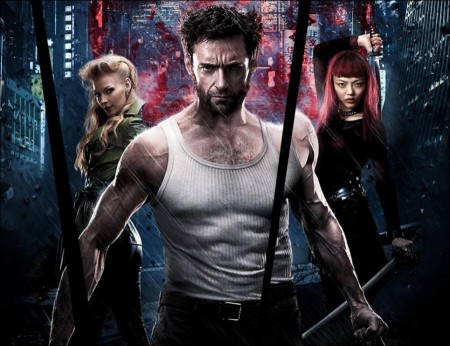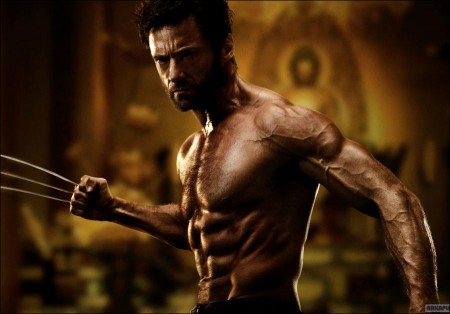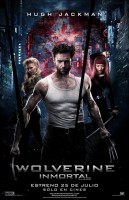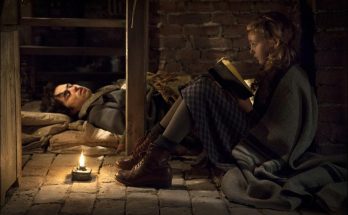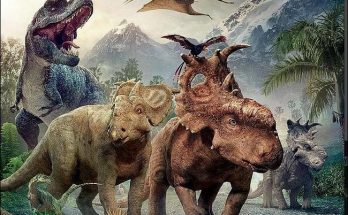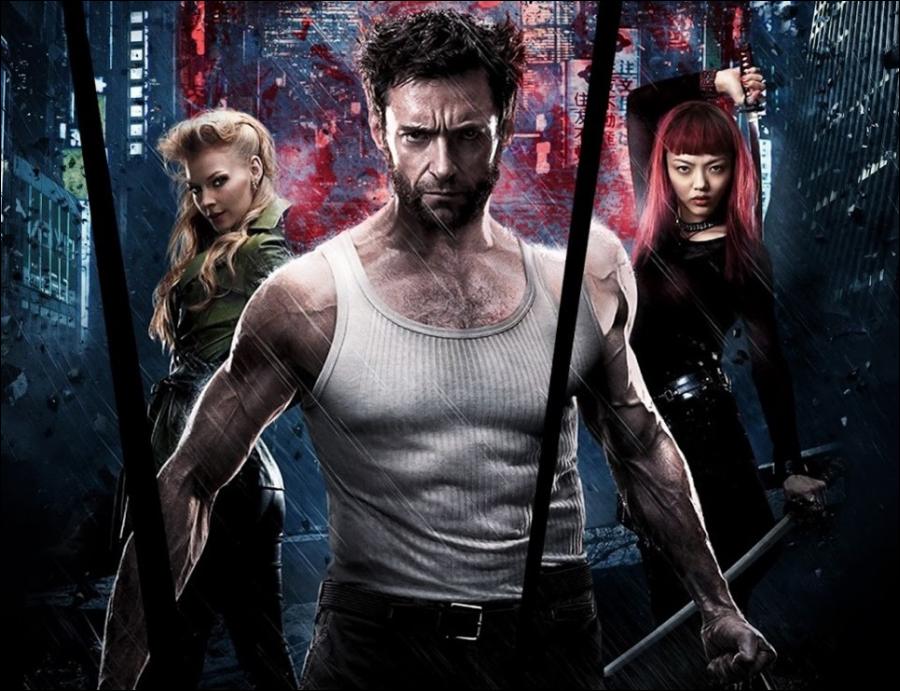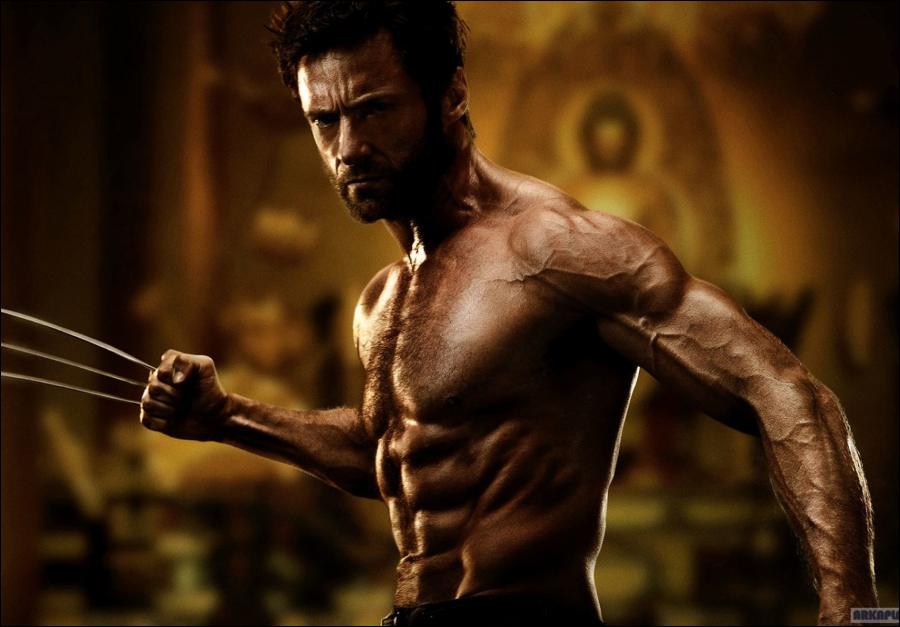Based on the celebrated comic book arc, this epic action-adventure takes Wolverine (Hugh Jackman), the most iconic character of the X-Men universe, to modern day Japan. Out of his depth in an unknown world, he will face a host of unexpected and deadly opponents in a life-or-death battle that will leave him forever changed. Vulnerable for the first time and pushed to his physical and emotional limits, he confronts not only lethal samurai steel but also his inner struggle against his own immortality.
The most iconic character in the X-Men universe embarks upon on an epic journey in modern-day Japan in The Wolverine. Inspired by the celebrated Marvel comic book arc, Logan (Hugh Jackman), the century-old mutant known to the world as Wolverine, is lured to a Japan he hasn’t seen since World War II – and into a shadowy realm of Yakuza and Samurai.
Suddenly finding himself on the run with a mysterious, beautiful heiress and confronted for the first time with the prospect of true mortality, Logan will be pushed to the physical and emotional edge – further than he’s ever been. On a perilous journey to rediscover the hero inside, Logan will be forced to grapple not only with powerful foes, mutant and human alike, but with the ghosts of his own haunted past, as well. As The Wolverine crosses his adamantium claws with Samurai swords, striking out through a maze of love, betrayal and honor, he will truly come to know the price of a life without end.
“This story takes The Wolverine into a world that is vastly different from any seen before in the X-Men series,” says Hugh Jackman, who also serves as a producer on the film. “It’s visually different and the tone is different. There are a lot of battles in this story, but the greatest battle of all is the one within Logan between being a monster and a becoming a human being.”
The Wolverine first emerged in 1974, when the character made his premiere appearance in the very last panel of an issue of The Incredible Hulk — one that foreshadowed his joining the band of mutant heroes known as The X-Men. He would soon be world-renowned for his adamantium claws, his powers of self-healing and his primal “berserker” rages – all of which would serve to forge The Wolverine into a superstar of the superhero realm.
In the 1980s, The Wolverine truly came into his own – in a four-issue miniseries created by “X-Men” writer Chris Claremont and the legendary graphic artist Frank Miller (“The Dark Knight,” “Sin City”). In the series, the character makes a solo journey to Japan, only to be lured into a maelstrom of crime, betrayal and honor, in the midst of which he is forced to confront both his terrifying strengths and his undiscovered vulnerability. Trying to maneuver in a world he can barely understand, The Wolverine, for the first time, finds his inner sense of justice.
Long a favorite of fans of Wolverine, the arc had also been an inspiration for Oscar®-nominated actor Hugh Jackman, who has embodied the character in six blockbuster X-Men movies (and is currently before the cameras in a seventh film). Jackman saw in this untold part of the character’s history a rare chance to dive even deeper beneath The Wolverine’s indestructibility, and to illuminate his darkest aspects in a new way.
That desire got a boost when Jackman teamed up with James Mangold, who had previously turned the story of Johnny Cash into a riveting account of love and rebellion in Walk the Line, and re-jiggered the classic Western 3:10 to Yuma into a contemporary cat-and-mouse game set around mythic themes of friendship, duty and destiny. He was the right choice to bring a new view to The Wolverine, and to take the character outside the usual conventions of the X-Men storylines.
“Jim Mangold knows how to make a movie that is fun, has incredible action, and yet also delivers all the finer elements of character and storytelling,” says Jackman. “He pushed me to go deeper, angrier, heavier, more berserk in every way and in every take.”
From the start, Mangold wanted to break the mold of the comic book-based film. Explains the director: “What interested me about The Wolverine was doing something quite different from the standard superhero movie, where it’s about stopping a villain’s diabolical plot. In this story, the action and suspense are built more on character, and are woven into a world that makes for a completely different kind of experience, one that you haven’t seen before.”
Though characters from Wolverine’s past are brought into the mix and there are allusions to what he has gone through in his previous adventures, the focus is on an alternate track from the X-Men movies.
“When you’re making a movie about a team of people like The X-Men, there’s only so much you can get inside their heads,” notes Mangold. “But this film is able to really get inside Logan, to explore who he is and the sources of his rage. He’s someone who has been used by the Defense Department, by the government, by enemies, by villains, even by loved ones. And over time his anger at that has grown, only to be multiplied by his natural, preexisting feral quality. Yet, within this story, he begins to he learn how this rage might be able to fuel and empower him.”
Ultimately, Mangold began to see the story more as an unflinching thriller about a man with a dark past searching for his future identity, than as something from a fantasy comic-book universe. “I think one the things that will most surprise people about this film is how real it is, how much you completely lose yourself in this world, in the action, the drama and the romance,” he comments.
Mangold was especially drawn to the uncertain junction where Logan finds himself at the beginning of this story: he’s been down many dark roads, feels he has lost or damaged nearly everything he loved, and is unsure if there is any path left to redemption. The one thing he has going for him is his immortality. But even that may be more of a curse than a blessing.
“One thing I find particularly interesting about Wolverine is his immortality, the fact that with his healing factor he can go on forever like a god, and because of that he also experiences the loneliness of a god. Even when Logan loses those he loves, he knows that he will keep going on,” Mangold observes. “He’s been going on for a century now, through wars and battles and deaths of his loved ones and he’s come to a point of great weariness. It’s a classic theme – the man who can live forever but suffers because of it. Logan is a damaged hero, and this story is very much about him looking to reclaim something he’s lost in himself.”
Mangold embraced the opportunity to take Logan directly into the heart of present-day Japan, which is as full of sleek, high-tech modernity as it is rife with deep traditions and hidden codes of honor. “This story takes Logan into a kind of fever dream of today’s Japan, full of Yakuza, Ninja, Samurai, Industrialist crime, mystery and mysticism,” the director explains.
The Japanese setting allowed Mangold and Jackman to re-imagine Logan in a fresh guise: as aRōnin. “In feudal Japan, the Samurai belonged to a master, and a Rōnin is a Samurai who no longer has a master to serve. So, he is a kind of a warrior without a purpose, without a cause,” Mangold explains. “Many of the people who made Logan feel part of a cause are now gone. So, he’s essentially a lost man, capable of doing anything, with no mandate. That’s an iconography that American Westerns and Samurai films share and now we’re bringing a comic book character into it.”
Juxtaposed with the beauty of Japan are intense action sequences, ranging from accelerating bullet trains to the towering menace of The Silver Samurai. But here, too, Mangold wanted to explore beyond the usual boundaries. “We were always thinking about pushing the envelope with the action and the visuals,” he says, “but doing so in a way that you never lose the sense that what is happening is very real.”
The entire production team was excited to be doing something unusual with a character that has become so beloved. Joining Jackman as producers on the film are Lauren Shuler Donner, who has been a vital part of X-men movie history from the very beginning, and Hutch Parker, who worked together with Donner to support Mangold’s vision.
“This really is the quintessential Wolverine story,” sums up Parker. “It takes him on a deep journey. It mines the essential conflicts within him. It challenges him, both physically and emotionally, in ways that we have never seen. It takes us into a Japan that is very real yet alien to us.”
Parker sees Mangold’s approach as a strong fit with the material. “Jim has built on what has come before in his own way,” he concludes. “He wanted to make this world viscerally real and was willing to not just show Wolverine’s rage but to answer the questions of why.”
Logan in Limbo (2013)
Though this marks the sixth time that Hugh Jackman has donned the persona of Logan – the most times a single actor has ever played a comic book hero — The Wolverine is like nothing that had come before. For one thing, as the film starts, Logan is unsure of what direction to turn as he heads to Japan.
“He’s someone who has always marched to beat of his own drum but at the beginning of our movie he’s probably more isolated than you’ve ever seen Wolverine,” explains Jackman. “He’s disaffected with the world, because he was created as a weapon and he’s rebelling against that – and he feels that he is a danger to society.”
Jackman goes on: “You will see Logan more vulnerable, more at risk, and more of a monster than you’ve ever seen him before. He’s struggling with identity, he’s struggling with his reason to exist, and now he faces the choice of whether to embrace his true nature or not.”
Jackman especially enjoyed taking Logan into Japan, which he notes “is like nowhere else on the planet,” a place that both haunts and changes Wolverine the more he engages with it.
“The atmosphere of Japan seeps through the movie,” Jackman observes. “For Logan it has the effect of wiping clean all his normal ways of interacting with people and reading situations. He has to start fresh. Japan is a fairly insular society with a very strong sense of its own culture and history, so Logan is really a stranger in this strange new world. He learns about the Samurai code, the training and the honor system. But he’s immediately distrustful of it, not dissimilar to when he first entered the world of X-Men. Yet, he watches and he adapts. He starts to gain respect for the idea of being a warrior, for the sense of service that they have. And he starts to become the better version of himself.”
From the start, Jackman was committed to taking Wolverine to new levels of physicality. The meant throwing himself into the most intensive and disciplined preparation regime he has undergone yet, combining rigorous diet, hardcore physical training, and intensive martial arts instruction.
“I’ve always loved playing this character but I have always had this thing of ‘I wish I had gone a little bit further physically with him,’” Jackman confesses. “This script gave me an opportunity to go further emotionally than I’ve been and I wanted to do the same physically. I started training and started a very strict diet far in advance since we had the preparation time. And I think the results have paid off because when I look at the screen, I see Wolverine there. I think it’s important for him to be lean, to see veins, to be vascular yet very strong obviously. I’ve always wanted people to look at the screen and go, whoa.”
Learning new fighting styles was also paramount to the performance. “I have always portrayed Wolverine as a street fighter and a pub brawler. His style is not pretty, he doesn’t want to hang around and jab at you, he just wants to take your head off in three seconds and move on. His fighting style is not studied in any way. But one of the great things about this story is that when he comes to Japan, he starts to really take that kind of discipline and training to heart.”
Jackman did the same, working closely with the leading stunt team 87Eleven to hone a variety of ninjitsu and other Japanese martial skills. “The team at 87Eleven were fantastic,” he says. “I was training every day and let me tell you, I thought the gym work was hard but training on the martial arts floor is ten times harder.”
Wolverine (2013)
Directed by: James Mangold
Starring: Hugh Jackman, Tao Okamoto, Rila Fukushima, Hiroyuki Sanada, Svetlana Khodchenkova
Screenplay by: Mark Bomback, Scott Frank, Christopher McQuarrie
Production Design by: François Audouy
Cinematography by: Ross Emery
Film Editing by: Michael McCusker
Costume Design by: Isis Mussenden
Set Decoration by: Rebecca Cohen
Music by: Marco Beltrami
MPAA Rating: PG-13 for sequences of intense sci-fi action and violence, some sexuality and language.
Studio: 20th Century Fox
Release Date: July 26, 2013
Visits: 122

